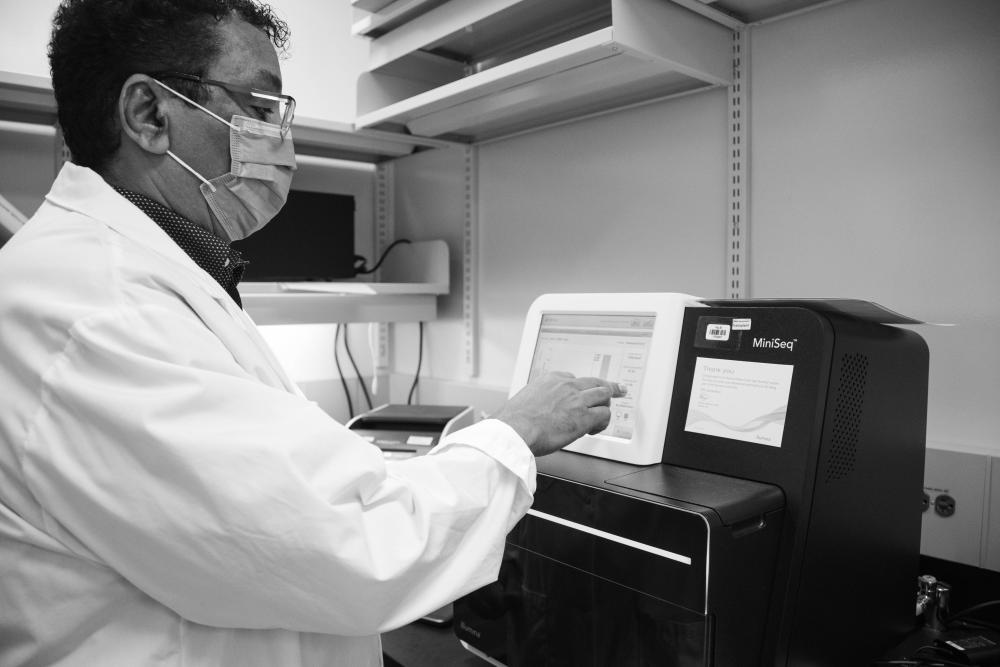
The transplant lab at University Hospital (UH) drones with the sound of computers, fluorescent lighting and equipment that gently oscillates trays of vials back and forth. People in their long white coats move from station to station, sometimes disappearing into small rooms containing centrifuges or cell counters. A sign outside a yellow-lit room warns of ultraviolet exposure.
Tech supervisor of pathology and laboratory medicine, Dr. Abubaker Sidahmed, leads us winding through to a room about the size of a walk-in closet, and there it is: the MiSeq next generation gene sequencing system. Pronounced, my seek, it looks something akin to a printer. However, like many aspects of medicine, looks can be deceiving.
“The best solid organ transplant outcomes are between a donor and recipient with closely matched HLA types,” explains Dr. Sidahmed. “This technology will help us better diagnose our patients and allow us to perform more transplants.”
Short for human leukocyte antigen, HLAs are proteins found on cells, which your immune system “reads” to determine whether they belong in your body. This is vital for any type of transplantation, from organs to stem cells.
Before, lab techs were only ever able to amplify a couple HLAs at a time. In fact, being such a time-consuming process, 24 HLA typings would take two technologists up to four weeks to complete. With MiSeq, the same number of samples can be completed in as little as three days. Not only that, but it’s far more accurate.
“This machine will tell you the whole sequence,” Dr. Sidahmed boasts. “Whether it’s 100, 200 or 300 nucleotides, it will sequence the entire gene from A to Z.”
For patients living with serious blood disorders such as leukemia and lymphoma, or those needing bone marrow transplants who require exact HLA matches with their donor, next generation sequencing is a game-changer. By providing full family HLA typing at higher resolution than ever before possible, donors can be identified faster, allowing for earlier treatment options when time is of the essence.
But as funding remains tight for programs across London Health Sciences Centre (LHSC), Dr. Sidahmed says donors are the difference. As a lively, colourful event celebrating local artists in support of the Multi-Organ Transplant Program at LHSC, New Canvas of Life was instrumental in the team’s acquiring this state-of-the-art piece of equipment. And thrilled as the team is to have successfully integrated the MiSeq into their lab over the past year, Dr. Sidahmed is ever practical, and cautious.
“At the moment, we only have one machine,” he says. “If anything happened to it, we’d be back using the old technology and its long wait times. With a second machine, nothing will be able to stop us.”
Another lab tech brushes by and looks at the readout screen of the MiSeq, noting 15 minutes left in its current cycle. Far from paper jams and printer errors, the MiSeq is painting a different picture of life for those in need of transplant.